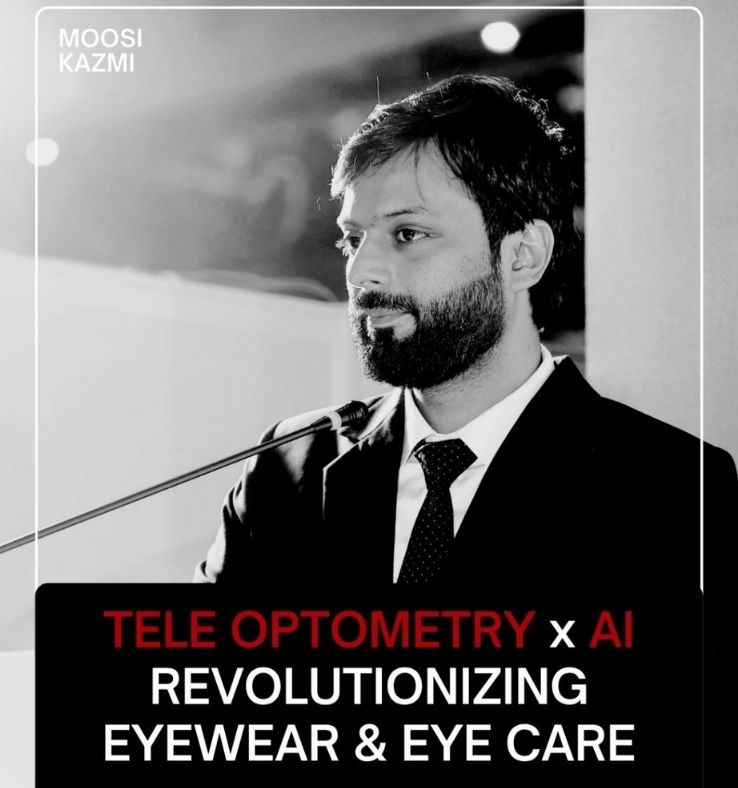WEAR YOUR SHADES EVEN WHEN SUN ISN'T OUT
_(6).jpg)
When we think of sunglasses, fashion often comes to mind—a stylish accessory that completes an outfit or our look. But beyond the glamour and the cool factor, sunglasses serve a much more crucial role:
•they are a powerful defense for your eyes.
•shielding them from the invisible dangers of UVA and UVB rays.
•reduce glare,headaches,or migraines as well as eye strain.
•prevent protection against debris.
•reduces the chances of getting diseases like skin cancer & macular degeneration .
Silent Threat: UV RADIATION
Ultraviolet (UV) rays from the sun are split into two categories that are of particular concern—UVA and UVB. These rays are invisible to the naked eye, but their effects can be felt in profound ways over time. UVA rays, which contribute about 95% of the UV radiation reaching the Earth's surface, penetrate deep into the eye, potentially leading to long-term damage. While, UVB rays partially absorbed by the atmosphere, are no less dangerous, but they do affect the surface of the eyesand the skin around them.
|
|
THE RISKS TO OCULAR HEALTH
Imagine your eyes as a delicate camera lens. Just as too much light can damage the lens of a camera,in the same way excessive exposure to UV rays can harm your eyes. Prolonged exposure to these rays increases the risk of several eye conditions:
- Cataracts: This condition, characterized by the clouding of the eye's natural lens, is a leading cause of blindness worldwide. UV radiation, especially UVB, has been linked to the development of cataracts.
- Macular Degeneration: This is a disease that affects the retina, leading to loss of central vision. UVA rays can contribute to the degeneration of the macula, the central part of the retina.
- Photokeratitis: Essentially a sunburn of the eye, photokeratitis is caused by intense UV exposure and can lead to pain, redness, and temporary vision loss. It’s common among those who spend extended time in highly reflective environments like snow or water.
- Pterygium: A growth on the white of the eye, pterygium can extend to the cornea and affect vision. UV exposure is a significant risk factor for this condition
 |
SO WHAT'S THE SOLUTION?
Thankfully, protecting our eyes from these dangers is as simple as slipping on a pair of sunglasses. But not just any pair will do—here’s what to look for:
 |
- 100% UV Protection: Make sure your sunglasses block 100% of both UVA and UVB rays. Labels that state "UV 400" cover all UV rays.
- Wraparound Styles:Sunglasses that wrap around the sides of your face offer added protection by blocking rays that might enter from the side.
- Polarized Lenses: While polarization doesn’t directly protect against UV rays, it does reduce glare, making activities like driving or spending time on the water safer and more comfortable.
- Quality Matters: Higher-quality sunglasses often provide better protection and are less likely to degrade over time. Investing in a good pair is an investment in your eye health.
The Long-Term Benefits
Wearing sunglasses is more than a fashion statement; it’s a daily habit that can significantly impact your long-term eye health. By consistently wearing sunglasses that provide full UV protection, we can reduce your risk of developing serious eye conditions and maintain healthier vision as we age.
PRO-TIP
Next time while searching for sunglasses, remember that you’re doing more than just looking good—you’re taking a vital step in protecting your eyes from the sun's harmful rays. It’s a small effort with big rewards, helping to ensure that your eyes remain healthy and your vision clear for years to come. So, go ahead, wear those shades with pride, and enjoy the sunshine with peace of mind.
REFERENCES:
Data references from:
1. https://pubmed.ncbi.nlm.nih.gov/?term=Bergmanson+JP&cauthor_id=21670694
2. https://www.wytheeyeassociates.com/6-benefits-of-wearing-sunglasses-every-day/
3. https://onlinelibrary.wiley.com/doi/10.1002/jbio.201700377
Pictures from:
1. https://www.nei.nih.gov/about/news-and-events/news/protecting-your-eyes-suns-uv-light
2. https://onlinelibrary.wiley.com/cms/asset/637f477e-678b-48d3-aead-8238592f7656/jbio201700377-fig-0001-m.jpg


.jpg)

.jpg)
.jpg)
.jpg)


1.jpg)



.jpg)
.jpg)



_(Instagram_Post).jpg)
.jpg)
_(1080_x_1080_px).jpg)


with_UP_Cabinet_Minister_Sh_Nand_Gopal_Gupta_at_OpticsFair_demonstrating_Refraction.jpg)
with_UP_Cabinet_Minister_Sh_Nand_Gopal_Gupta_at_OpticsFair_demonstrating_Refraction_(1).jpg)

.jpg)








.jpg)



.png)




